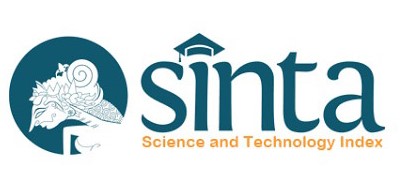The Use of Dexmedetomidine on Pediatrics Undergoing Magnetic Resonance Imaging (MRI) Examination
Abstract
Keywords
Full Text:
PDFReferences
Katzung B. Basic & Clinical Pharmacology. 14th ed. New York: Mcgraw-Hill Education; 2018.
Weerink MAS, Struys MMRF, Hannivoort LN, Barends CRM, Absalom AR, Colin P. Clinical Pharmacokinetics and Pharmacodynamics of Dexmedetomidine. Clin Pharmacokinet. 2017;56(8):893-913. doi:10.1007/s40262-017-0507-7
Olgun G, Ali MH. Use of Intranasal Dexmedetomidine as a Solo Sedative for MRI of Infants. Hosp Pediatr. 2018;8(2):68-71. doi:10.1542/hpeds.2017-0120
Ahmad R, Hu HH, Krishnamurthy R, Krishnamurthy R. Reducing sedation for pediatric body MRI using accelerated and abbreviated imaging protocols. Pediatr Radiol. 2018;48(1):37-49. doi:10.1007/s00247-017-3987-6
Dong SZ, Zhu M, Bulas D. Techniques for minimizing sedation in pediatric MRI. J Magn Reson Imaging. 2019;50(4):1047-1054. doi:10.1002/jmri.26703
Jung SM. Drug selection for sedation and general anesthesia in children undergoing ambulatory magnetic resonance imaging. Yeungnam Univ J Med. 2020;37(3):159-168. doi:10.12701/yujm.2020.00171
Kaur M, Singh P. Current role of dexmedetomidine in clinical anesthesia and intensive care. Anesth Essays Res. 2011;5(2):128-133. doi:10.4103/0259-1162.94750
Naaz S, Ozair E. Dexmedetomidine in current anaesthesia practice- a review. J Clin Diagnostic Res. 2014;8(10):GE01-GE04. doi:10.7860/JCDR/2014/9624.4946
Scott-Warren VL, Sebastian J. Dexmedetomidine: its use in intensive care medicine and anaesthesia. BJA Educ. 2016;16(7):242-246. doi:10.1093/bjaed/mkv047
Mahmoud M, Mason KP. Dexmedetomidine: Review, update, and future considerations of paediatric perioperative and periprocedural applications and limitations. Br J Anaesth. 2015;115(2):171-182. doi:10.1093/bja/aev226
Lee S. Dexmedetomidine: present and future directions. Korean J Anesthesiol. 2019;72(4):323-330. doi:10.4097/kja.19259
Plambech MZ, Afshari A. Dexmedetomidine in the pediatric population: A review. Minerva Anestesiol. 2015;81(3):320-332.
Boriosi JP, Eickhoff JC, Hollman GA. Safety and Efficacy of Buccal Dexmedetomidine for MRI Sedation in School-Aged Children. Hosp Pediatr. 2019;9(5):348-354. doi:10.1542/hpeds.2018-0162
Najafi N, Veyckemans F, Van de Velde A, Poelaert J. Usability of dexmedetomidine for deep sedation in infants and small children with respiratory morbidities. Acta Anaesthesiol Scand. 2016;60(7):865-873. doi:10.1111/aas.12715
Sulton C, Kamat P, Mallory M, Reynolds J. The Use of Intranasal Dexmedetomidine and Midazolam for Sedated Magnetic Resonance Imaging in Children. Pediatr Emerg Care. 2017;Publish Ah(00):1-5. doi:10.1097/pec.0000000000001199
Tug A, Hanci A, Turk HS, et al. Comparison of Two Different Intranasal Doses of Dexmedetomidine in Children for Magnetic Resonance Imaging Sedation. Pediatr Drugs. 2015;17(6):479-485. doi:10.1007/s40272-015-0145-1
Zhou Q, Shen L, Zhang X, Li J, Tang Y. Dexmedetomidine versus propofol on the sedation of pediatric patients during magnetic resonance imaging (MRI) scanning: A meta-analysis of current studies. Oncotarget. 2017;8(60):102468-102473. doi:10.18632/oncotarget.22271
Fang HW, Yang L, Wang XR, Zhu H. Clinical efficacy of dexmedetomidine versus propofol in children undergoing magnetic resonance imaging: A meta-analysis. Int J Clin Exp Med. 2015;8(8):11881-11889.
Tang Y, Meng J, Zhang X, Li J, Zhou Q. Comparison of dexmedetomidine with propofol as sedatives for pediatric patients undergoing magnetic resonance imaging: A meta‑analysis of randomized controlled trials with trial sequential analysis. Exp Ther Med. 2019:1775-1785. doi:10.3892/etm.2019.7751
Teshome G, Belani K, Braun JL, Constantine DR, Gattu RK, Lichenstein R. Comparison of Dexmedetomidine With Pentobarbital for Pediatric MRI Sedation. Hosp Pediatr. 2014;4(6):360-365. doi:10.1542/hpeds.2013-0111
Ibrahim M. A prospective, randomized, double blinded comparison of intranasal dexmedetomodine vs intranasal ketamine in combination with intravenous midazolam for procedural sedation in school aged children undergoing MRI. Anesth Essays Res. 2014;8(2):179. doi:10.4103/0259-1162.134495
Raeder J. Clinical Ambulatory Anesthesia. London: Cambridge University Press; 2010.
Williams UU, Rebello E. Dexmedetomidine in Ambulatory Surgery and Its Role in Decreasing Opioid Consumption. ASA Monit. 2018;82:14–15. https://pubs.asahq.org/monitor/article-abstract/82/2/14/6156/Dexmedetomidine-in-Ambulatory-Surgery-and-Its-Role?redirectedFrom=fulltext.
Koyyalamudi V, Sen S, Patil S, et al. Adjuvant Agents in Regional Anesthesia in the Ambulatory Setting. Curr Pain Headache Rep. 2017;21(6). doi:10.1007/s11916-017-0604-1
DOI: http://dx.doi.org/10.21776/ub.jap.2021.002.02.05
Refbacks
- There are currently no refbacks.

This work is licensed under a Creative Commons Attribution 4.0 International License.









.png)

